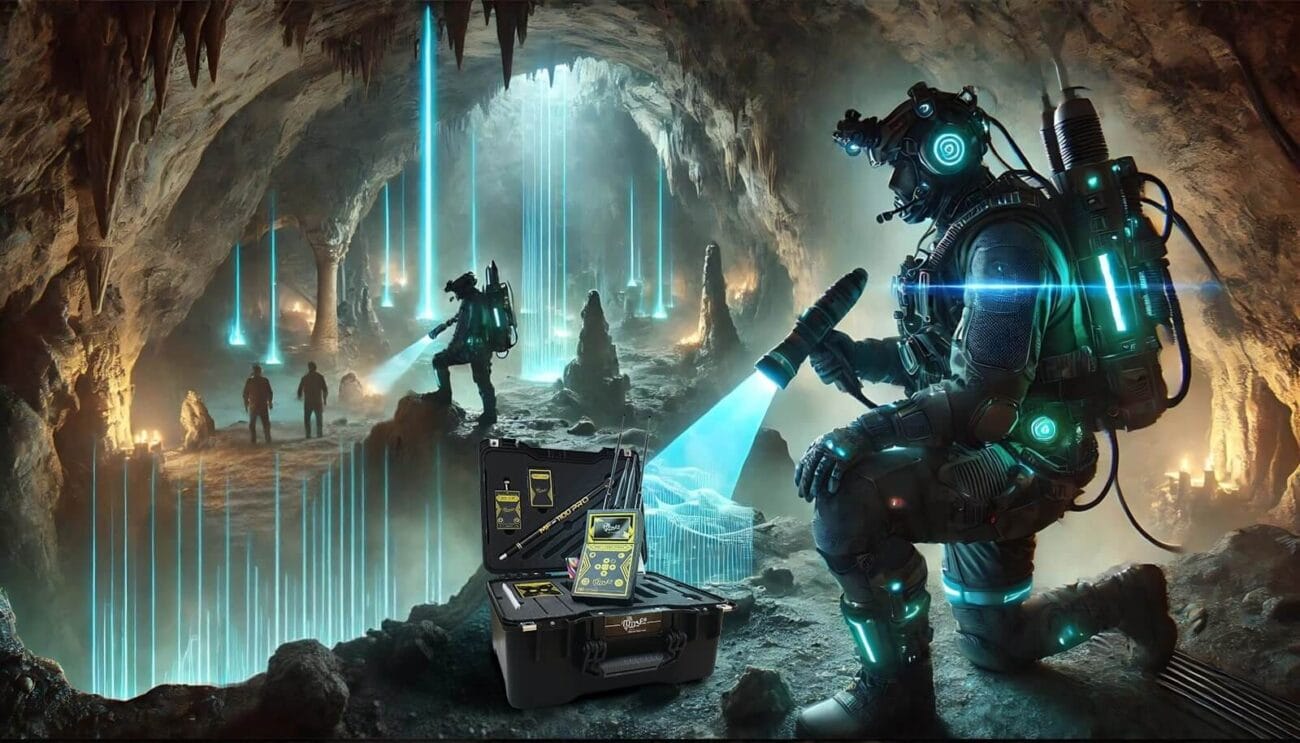Metal Detectors – Advanced Technology and Applications in Treasure Hunting

Metal Detectors – Advanced Technology and Applications in Treasure Hunting
Metal detectors have evolved from simple devices into sophisticated instruments that are now an essential part of treasure hunting, archaeological exploration, security screening, and industrial applications. In today’s rapidly advancing technological landscape, metal detectors combine precision engineering with state-of-the-art electronics to deliver unparalleled performance. This comprehensive article will explore every facet of metal detectors—from their history and evolution to the modern features that set them apart from earlier models, as well as their varied applications in different fields.
Whether you are a seasoned treasure hunter, an archaeology enthusiast, or a security professional, understanding the inner workings and capabilities of metal detectors is crucial. In this article, we will break down the key technological features, discuss practical applications, and offer tips for maintenance and best practices. Discover how metal detectors are revolutionizing the way we search for valuable artifacts and secure our environments.
For those looking to explore the world of Metal Detectors and harness the power of advanced detection technology, this guide provides expert insights, detailed explanations, and practical advice to help you get the most out of your equipment.
Table of Contents
- Introduction
- What Are Metal Detectors?
- History and Evolution of Metal Detectors
- How Do Metal Detectors Work?
- Key Technological Features of Metal Detectors
- Applications of Metal Detectors
- Metal Detectors in Treasure Hunting
- Metal Detectors in Archaeology
- Metal Detectors in Security and Industrial Applications
- Future Trends in Metal Detector Technology
- Maintenance and Best Practices for Metal Detectors
- Conclusion
- Frequently Asked Questions (FAQ)
Introduction
Metal detectors have a rich and fascinating history, dating back over a century. Initially designed for military applications and later adapted for civilian use, these devices have undergone significant improvements over time. Today’s metal detectors leverage advanced electronics, digital signal processing, and refined sensor technologies to deliver results that were once thought impossible.
The modern metal detector is not just a tool for finding coins or relics; it is a versatile instrument used in various industries. From securing public spaces to aiding in geological surveys and archaeological digs, the applications of metal detectors are as diverse as they are impactful. Their precision and reliability have made them indispensable in fields that require accurate detection of metallic objects beneath the surface.
In this article, we will explore the many dimensions of metal detectors. We will cover the technological advancements that have transformed these devices, delve into the specifics of how they work, and discuss their broad range of applications. By the end, you will have a thorough understanding of what makes modern metal detectors so effective and why they continue to be a vital tool in many areas of work and recreation.
What Are Metal Detectors?
Metal detectors are electronic devices designed to locate metallic objects hidden beneath the surface. Using electromagnetic fields, these detectors identify variations in conductivity and magnetic permeability that indicate the presence of metal. Over time, they have evolved from bulky, rudimentary machines to sleek, high-performance units that offer both versatility and precision.
At their core, metal detectors consist of a control box, a search coil, and a shaft. The control box contains the electronics, power supply, and user interface, while the search coil is the sensor that emits and receives electromagnetic signals. The shaft connects the coil to the control box and allows the user to maneuver the detector effectively over the target area.
Modern devices come equipped with a host of features that enhance performance and usability. These include adjustable sensitivity, discrimination settings to differentiate between types of metals, and various modes tailored for specific environments. Whether you are searching for buried treasure, ensuring public safety, or conducting an industrial survey, metal detectors are engineered to deliver reliable results.
For enthusiasts seeking to invest in Advanced Metal Detectors that combine cutting-edge technology with ease of use, understanding the fundamentals is the first step toward making an informed choice.
History and Evolution of Metal Detectors
The history of metal detectors is a testament to human ingenuity and the relentless pursuit of innovation. Early prototypes were developed in the late 19th and early 20th centuries, primarily for military applications such as detecting landmines. Over the decades, technological breakthroughs in electronics and electromagnetic theory paved the way for more sophisticated designs.
During the 1960s and 1970s, the advent of transistor technology and miniaturization revolutionized the field. Metal detectors became more portable, efficient, and accessible to the general public. This period also saw the emergence of recreational metal detecting, as hobbyists began using these devices to search for coins, jewelry, and historical artifacts buried beneath the earth.
In the modern era, digital signal processing, microprocessors, and multi-frequency capabilities have pushed metal detectors to new heights. Today’s units are capable of distinguishing between different types of metals, estimating the depth of buried objects, and even providing target identification through sophisticated algorithms. The evolution of these devices continues as researchers explore integration with artificial intelligence and advanced sensor fusion technologies.
As metal detectors have become more refined, their applications have expanded far beyond treasure hunting. They are now used in security screening at airports, in construction for utility mapping, and in environmental studies to assess soil contamination. The journey from rudimentary tools to highly advanced instruments reflects both the technological progress and the growing demand for reliable detection solutions.
How Do Metal Detectors Work?

Revolutionizing treasure hunting and archaeological exploration with advanced metal detectors featuring multi-frequency scanning, AI integration, and real-time detection analysis.
Understanding how metal detectors work involves a dive into the principles of electromagnetism and signal processing. At the heart of every metal detector is a simple yet powerful mechanism that uses electromagnetic fields to detect the presence of metal.
Signal Emission and Reception
The process begins when the search coil, which is a loop of wire, is energized with an alternating current. This creates a magnetic field that radiates outwards into the ground. When this magnetic field encounters a metallic object, it induces eddy currents in the metal. These eddy currents, in turn, produce their own magnetic fields that oppose the original field.
The search coil then detects these secondary magnetic fields. The detector’s electronics analyze the returning signals to determine whether they originate from a metal object. The strength, frequency, and phase of the returned signal can provide valuable information about the size, depth, and type of metal detected.
Signal Processing
Once the coil receives the altered signal, the control box processes the information using digital signal processing (DSP) techniques. The DSP algorithms filter out background noise and enhance the detection of relevant signals. This processing is critical, as it helps to differentiate between various types of metal and to minimize false signals caused by mineralization in the soil.
The processed signals are then translated into audible tones, visual indicators, or both. Users can adjust sensitivity settings and discrimination levels to fine-tune the detector for specific targets. This versatility allows the metal detector to be effective in a wide range of environments, from sandy beaches to rocky terrains.
Depth and Sensitivity
Depth detection is a key performance metric in metal detectors. The ability to sense objects buried deep underground depends on the power of the transmitted signal, the size and frequency of the search coil, and the sensitivity of the electronics. Advanced detectors use multiple frequencies to improve depth detection and target resolution.
High-performance metal detectors are engineered to provide a balance between depth penetration and target discrimination. By carefully calibrating these parameters, manufacturers are able to produce devices that can detect small objects at considerable depths while minimizing interference from surrounding materials.
Key Technological Features of Metal Detectors
Modern metal detectors are packed with features that enhance their performance and usability. These technological advancements have transformed them from simple tools into multi-functional devices capable of meeting a variety of detection needs.
Advanced Sensor Technologies
One of the most significant improvements in recent years is the development of advanced sensor technologies. Modern metal detectors use highly sensitive coils and digital processors to capture even the faintest signals. These sensors can differentiate between various metal types based on their conductivity and magnetic properties.
The integration of sensor technologies has also improved the accuracy of target identification. By analyzing the shape, size, and conductivity of the target, modern devices can provide users with detailed information about what lies beneath the surface.
Multi-Frequency Operation
Many contemporary metal detectors feature multi-frequency operation, which allows the device to operate on several frequencies simultaneously. This capability improves the detector’s ability to distinguish between different metals and to perform well in challenging ground conditions.
Multi-frequency detectors can adapt to varying soil mineralization and detect targets at different depths more effectively than single-frequency units. This flexibility is especially important in environments where the composition of the soil can vary significantly over short distances.
Discrimination and Target Identification
Target identification is a critical feature for users who need to distinguish between valuable finds and common metallic trash. Modern metal detectors incorporate sophisticated discrimination algorithms that analyze the signal’s phase shift and amplitude to identify the type of metal detected.
These algorithms help users to set specific discrimination settings, so the detector only signals when it encounters targets that meet the desired criteria. This feature is particularly valuable for treasure hunters and archaeologists, as it reduces the time spent digging up unwanted items.
Ergonomics and User Interface
The design of metal detectors has also evolved significantly, with a strong emphasis on ergonomics and user interface. Today’s devices are lightweight, balanced, and designed for extended use without causing fatigue. User-friendly interfaces, often featuring digital displays, provide real-time information on signal strength, target depth, and other critical parameters.
Intuitive controls allow users to adjust settings on the fly, making it easier to tailor the detector to different environments and target types. These design improvements have made modern metal detectors accessible to both professionals and hobbyists alike.
Applications of Metal Detectors
The versatility of metal detectors is evident in their wide range of applications. They are used in diverse fields, each benefiting from the unique capabilities of these devices.
Treasure Hunting and Recreational Use
Treasure hunting is perhaps the most well-known application of metal detectors. Hobbyists and professional treasure hunters alike use these devices to search for lost coins, jewelry, relics, and other valuable items buried underground. Success stories abound of individuals uncovering treasures that have significant historical and monetary value.
For those involved in recreational metal detecting, finding a rare coin or an antique piece can be an exhilarating experience. Many enthusiasts spend weekends exploring parks, beaches, and historical sites, driven by the hope of making a significant discovery. If you are interested in investing in Professional Metal Detectors that are engineered for treasure hunting, it is important to consider factors such as coil size, frequency, and discrimination features.
Archaeological Exploration
Archaeologists have long utilized metal detectors as a non-invasive means of locating historical artifacts. These devices assist in mapping ancient sites and uncovering relics that provide insights into past civilizations. The ability to detect buried metal artifacts helps researchers preserve the integrity of archaeological sites by minimizing unnecessary excavation.
Metal detectors play a crucial role in cultural heritage preservation. By identifying the locations of artifacts before any excavation begins, archaeologists can plan their digs more effectively, ensuring that valuable historical information is not lost.
Security and Industrial Applications
Beyond treasure hunting and archaeology, metal detectors are vital in security and industrial applications. In airports, stadiums, and other public venues, metal detectors are used for screening purposes to ensure safety. They are also employed in construction and utility work to detect buried pipelines, cables, and other metallic infrastructure.
Industrial applications of metal detectors include quality control in manufacturing, where they are used to ensure that products are free of unwanted metallic contaminants. These applications highlight the adaptability and importance of metal detection technology in maintaining safety and efficiency across various sectors.
Environmental and Geophysical Surveys
Environmental scientists and geophysicists also use metal detectors for research purposes. For instance, these devices can assist in soil contamination studies by detecting metallic pollutants. In addition, geophysical surveys often rely on metal detectors to map subsurface structures and to identify mineral deposits.
The data gathered from such surveys can be instrumental in guiding remediation efforts and in understanding the geological history of an area. Metal detectors thus serve as powerful tools in both environmental protection and resource management.
Metal Detectors in Treasure Hunting
Treasure hunting with metal detectors has captured the imagination of many around the world. From lost pirate treasures to hidden caches of historical artifacts, the allure of discovering something extraordinary drives countless enthusiasts to explore every corner of the earth.
Successful treasure hunting requires not only a high-quality metal detector but also an understanding of the terrain, history, and environmental factors that can affect detection. Many users find that combining modern technology with traditional investigative methods yields the best results. Detailed research, site surveys, and even the use of historical maps can significantly increase the chances of a successful find.
For those ready to take their treasure hunting endeavors to the next level, investing in High-Performance Metal Detectors is a wise choice. These devices offer enhanced sensitivity and advanced discrimination features, ensuring that users can confidently separate valuable targets from common debris.
Metal Detectors in Archaeology
In the field of archaeology, metal detectors have become indispensable tools that complement traditional excavation methods. By providing a non-invasive means to locate buried artifacts, these devices help archaeologists to map out sites before committing to full-scale digs.
The integration of metal detection technology into archaeological practice has led to numerous groundbreaking discoveries. Artifacts that would have otherwise remained hidden can now be identified and preserved, offering invaluable insights into historical civilizations. Detailed documentation and careful recovery processes ensure that the context of each discovery is maintained, enriching our understanding of human history.
The use of metal detectors in archaeology not only speeds up the discovery process but also minimizes damage to fragile artifacts. This careful approach is critical in preserving cultural heritage and in advancing our collective knowledge of the past.
Metal Detectors in Security and Industrial Applications
Security applications of metal detectors are ubiquitous in modern society. From the checkpoints at airports to the security screenings at public events, these devices serve as the first line of defense against potential threats. The ability to quickly and reliably detect metallic objects helps maintain safety and order in high-traffic areas.
In industrial settings, metal detectors are used to ensure that manufactured products meet strict quality standards. They detect unwanted metallic contaminants and verify the integrity of metal components in products ranging from food items to electronics. This application is critical for maintaining consumer safety and for upholding the reputation of manufacturing companies.
By providing robust and reliable performance in diverse conditions, metal detectors have proven their value in enhancing security protocols and in streamlining industrial processes.
Future Trends in Metal Detector Technology
The future of metal detector technology is bright, with continuous advancements promising even greater capabilities and performance. Researchers and manufacturers are exploring several innovative trends that will shape the next generation of metal detectors.
One of the most exciting trends is the integration of artificial intelligence (AI) and machine learning algorithms. These technologies have the potential to dramatically improve target identification and discrimination by learning from vast amounts of data and adapting to different environments in real time.
Enhanced connectivity and data sharing are also on the horizon. Future metal detectors may feature real-time cloud integration, enabling users to share detection data instantly with remote teams or to receive automated updates on ground conditions. Mobile app compatibility will further streamline the user experience, making it easier than ever to adjust settings and analyze data on the go.
Eco-friendly innovations are another key focus for the future. Manufacturers are exploring sustainable materials and energy-efficient components to reduce the environmental impact of metal detectors. These advancements will not only improve performance but also contribute to a greener, more sustainable future.
As the industry continues to push the boundaries of what is possible, the capabilities of metal detectors will expand, opening up new opportunities for treasure hunting, archaeological research, and security applications.
Maintenance and Best Practices for Metal Detectors
Maintaining your metal detector in optimal condition is crucial to ensure long-term performance and reliability. Regular maintenance, calibration, and proper handling can extend the life of your device and ensure consistent, accurate results.
It is important to follow the manufacturer’s guidelines for cleaning and storage. After each use, especially in harsh outdoor environments, the device should be cleaned to remove dirt, moisture, and any corrosive elements. Regular inspections of the coil and cable for signs of wear or damage are also essential.
Software and firmware updates play a vital role in keeping your metal detector up-to-date with the latest improvements and security patches. Periodic calibration ensures that the device continues to operate within its specified parameters and can accurately detect targets at various depths.
By following best practices in maintenance, users can maximize the performance and longevity of their metal detectors, ensuring that they remain a reliable tool for years to come.
Conclusion
Metal detectors have come a long way since their inception, evolving into sophisticated instruments that serve a multitude of purposes. From treasure hunting and archaeological exploration to security screening and industrial quality control, these devices play an indispensable role in today’s world. Their advanced sensor technologies, multi-frequency capabilities, and intuitive user interfaces make them highly effective in detecting metallic objects hidden beneath the surface.
As we have seen throughout this article, the continuous advancements in metal detector technology have significantly broadened their applications. Whether you are searching for lost treasures, exploring historical sites, or ensuring public safety, modern metal detectors offer the precision and reliability needed to achieve your goals.
For those who are ready to embrace the latest in detection technology, consider exploring the offerings of Cutting-Edge Metal Detectors that combine innovation, performance, and durability. These devices are designed to meet the demands of both professional and recreational users, ensuring that every expedition is met with success.
In conclusion, the world of metal detectors is a dynamic and ever-evolving field, driven by technological innovation and a passion for discovery. By staying informed about the latest trends, investing in high-quality equipment, and following best practices for maintenance, you can unlock new opportunities and make significant discoveries that enrich your life and contribute to our understanding of the world around us.
Frequently Asked Questions (FAQ)
1. What are metal detectors and how do they work?
Metal detectors are electronic devices that use electromagnetic fields to detect metallic objects hidden underground. They work by emitting a magnetic field from a search coil, which interacts with metal objects to create a secondary magnetic field. The device then processes these signals to indicate the presence, depth, and type of metal detected.
2. What are the main applications of metal detectors?
Metal detectors are used in a variety of fields, including treasure hunting, archaeological exploration, security screening, industrial quality control, and environmental surveys. Their ability to detect metal makes them valuable for both recreational and professional purposes.
3. How do multi-frequency metal detectors improve detection performance?
Multi-frequency metal detectors operate on several frequencies simultaneously, which enhances their ability to distinguish between different types of metal and to operate effectively in challenging ground conditions. This results in improved target identification and increased depth penetration.
4. What maintenance practices are recommended for metal detectors?
Regular cleaning, calibration, and software updates are essential for maintaining optimal performance. It is important to inspect the device for any signs of wear or damage, especially after use in harsh environments, and to follow the manufacturer’s guidelines for storage and maintenance.
5. What are the future trends in metal detector technology?
The future of metal detector technology includes integration with artificial intelligence, enhanced connectivity through cloud-based data sharing, and eco-friendly design improvements. These advancements are expected to further improve target identification, user experience, and overall performance.


